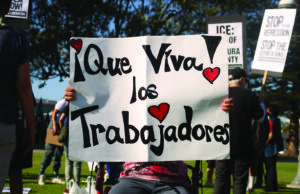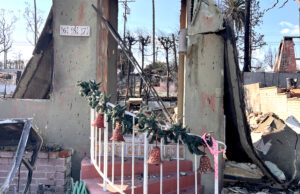‘The Monk and the Gun’ meditates on democracy

When “The Monk and the Gun” caught my eye on a list of newly released films I had no idea what I was in for. After scouring the internet for showtimes, I finally found one just barely less than an hour’s drive away. I sat in a very small, but lively theater to finally see the film I had been curious about for the better part of a month.
From the very first shot of the film the cinematography is meditative, immersive and stunning. The many wide establishing shots featuring the characters of the film aid in the formation of this film’s distinct pace. Colors pop, and, while the slow pacing took a few scenes for me to settle into, it enables the spaces in which the story takes place to gain weight and character. This enables the audience to experience the location in a more immersive way then would be possible with faster cutting and too many angles. The tempo of the editing in the film also enables the audience to better relate to the monk, traveling on foot for days while the modern world builds an increasingly influential presence in the day-to-day situations one finds oneself in.
The film is mostly in Bhutanese and takes place in 2006, just after the King of Bhutan abdicated his throne and turned the country into a democracy. The isolated, ancient nation had never known democracy, so government officials were tasked with teaching villagers the meaning of elections as well as how to vote. The reactions to the proposed democracy and preparations for the upcoming election is the basis for the actions of all the major characters in the story. While the monk is the central character, one could argue that the film doesn’t have a true protagonist in the western sense, as a number of characters are allotted substantial screen time. There are certainly characters with more lines than the monk. The premise of introducing democracy to Bhutan and the monk’s quest for a gun artfully weaves irony into the background and foreground of many scenes. I often realized the irony of elements of the film after experiencing them- like the title itself.
I would not call the film a “scathing critique” of western influence, as others have deemed it, rather, it captures a fascinating convergence of different ways of living and thinking and the reaction this introduction garners from a variety of people.
This film was worth looking for. It is well-made, and, of the films I have seen, unique. I will be on the lookout for more from this director- and for more films from Bhutan.



